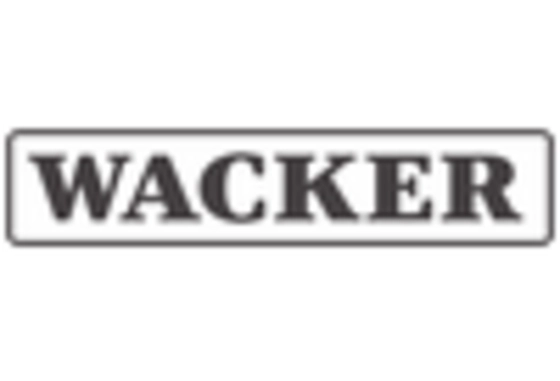Rising Automotive Sector Demand
The Silicon Metal Market is also benefiting from the rising demand in the automotive sector, particularly with the increasing adoption of electric vehicles (EVs). Silicon metal is utilized in the production of lightweight materials and battery components, which are crucial for enhancing the efficiency and performance of EVs. As the automotive industry transitions towards electrification, the demand for silicon metal is expected to rise significantly. By 2025, the automotive sector could represent approximately 15% of the total silicon metal consumption, indicating a promising avenue for growth within the Silicon Metal Market.
Expansion of Solar Energy Applications
The Silicon Metal Market is significantly influenced by the expansion of solar energy applications. Silicon metal is a primary material used in the manufacturing of photovoltaic cells, which convert sunlight into electricity. With the global push towards renewable energy sources, the demand for silicon metal in solar panel production is anticipated to grow. In 2025, it is estimated that around 40% of silicon metal production will be utilized in the solar energy sector. This shift towards sustainable energy solutions is likely to bolster the Silicon Metal Market, as more countries invest in solar infrastructure.
Technological Innovations in Metallurgy
Technological innovations in metallurgy are playing a pivotal role in shaping the Silicon Metal Market. Advances in production techniques, such as the development of more efficient smelting processes, are enhancing the yield and quality of silicon metal. These innovations not only reduce production costs but also minimize environmental impact, aligning with global sustainability goals. As manufacturers adopt these cutting-edge technologies, the Silicon Metal Market is likely to witness increased competitiveness and profitability. The ongoing research and development efforts in metallurgy could lead to a more robust supply chain and improved product offerings.
Increasing Demand from Electronics Sector
The Silicon Metal Market is experiencing a notable surge in demand from the electronics sector. Silicon metal is a critical component in the production of semiconductors, which are essential for various electronic devices. As the proliferation of smart devices continues, the need for high-purity silicon metal is expected to rise. In 2025, the electronics sector is projected to account for approximately 30% of the total silicon metal consumption. This trend indicates a robust growth trajectory for the Silicon Metal Market, driven by advancements in technology and the increasing integration of silicon-based components in consumer electronics.
Geopolitical Factors Affecting Supply Chains
The Silicon Metal Market is currently navigating complex geopolitical factors that influence supply chains. Trade policies, tariffs, and international relations can significantly impact the availability and pricing of silicon metal. For instance, restrictions on exports from key producing countries may lead to supply shortages, thereby affecting market dynamics. In 2025, it is anticipated that geopolitical tensions could create volatility in silicon metal prices, prompting manufacturers to seek alternative sources or invest in domestic production capabilities. This scenario underscores the importance of strategic planning within the Silicon Metal Market to mitigate risks associated with geopolitical uncertainties.













Leave a Comment